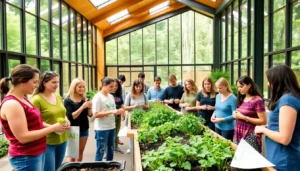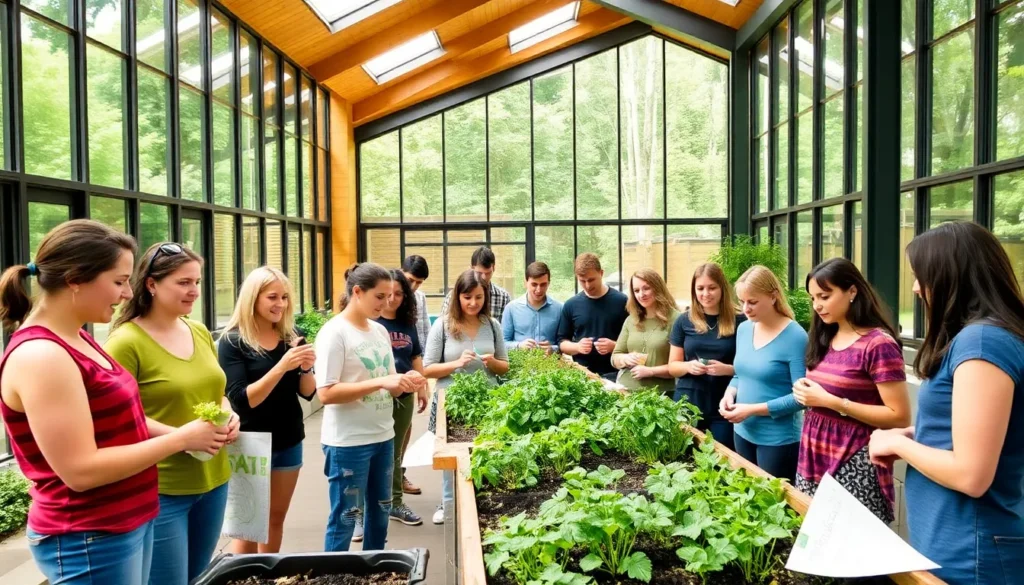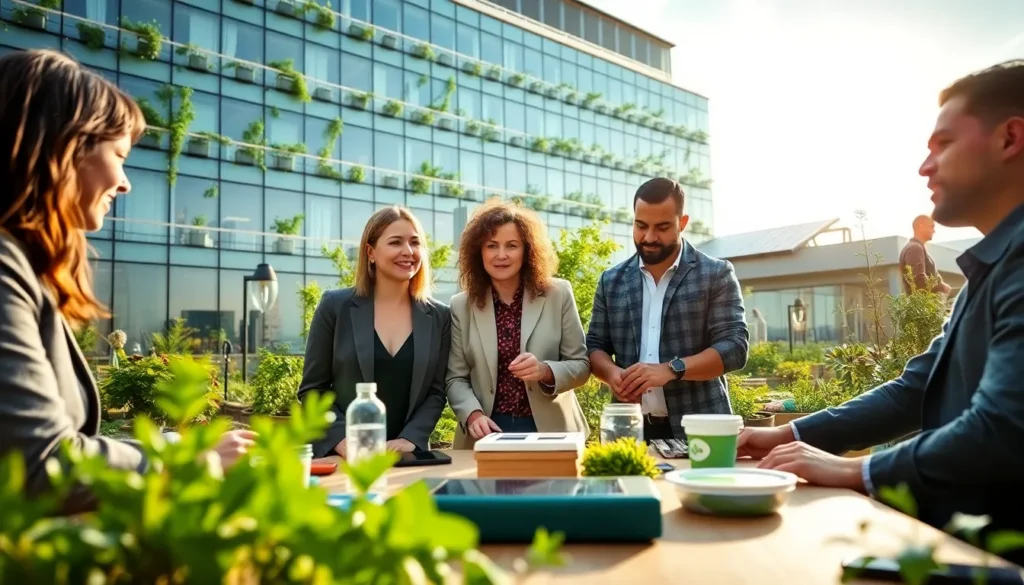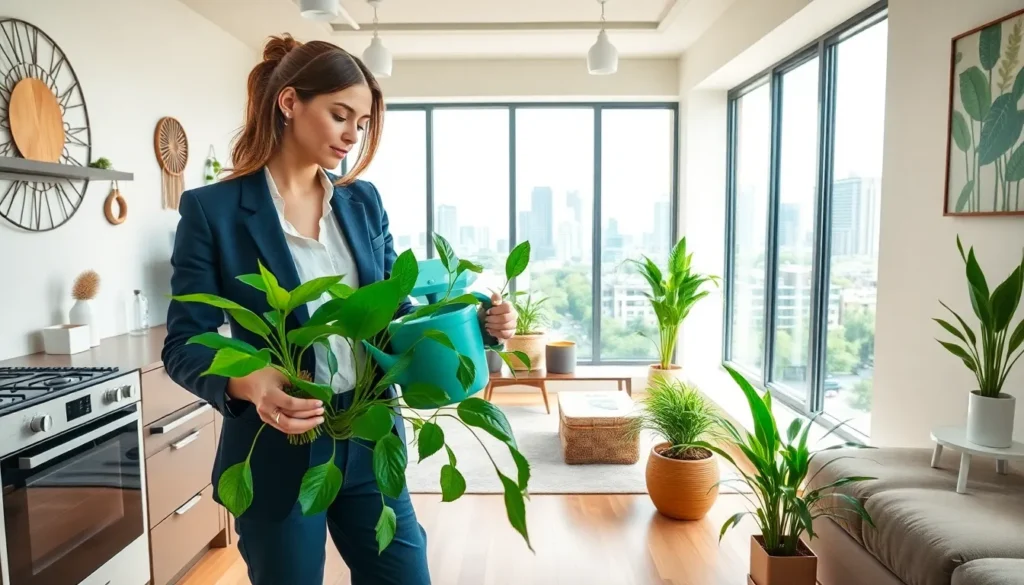Table of Contents
ToggleImagine a world where your morning coffee powers your home or where composting is as easy as taking out the trash. Welcome to the realm of sustainable living innovations, where creativity and responsibility intertwine to create a better environment for all. With the planet’s wellbeing in mind, this article dives into groundbreaking ideas and technologies ushering in a new era of eco-friendliness. Let’s explore why jumping on the sustainability bandwagon isn’t just a trend but a necessity.
Overview Of Sustainable Living Innovations

Sustainable living innovations represent a broad range of methods, products, and strategies aimed at reducing environmental impact while promoting eco-friendly practices. These innovations encompass cutting-edge technologies, creative designs, and smarter approaches to everyday living that minimize waste and conserve energy. They can be seen in everything from solar-powered gadgets to biodegradable products. The aim is clear: fostering a lifestyle that respects the planet’s resources and seeks to restore what has been lost. Innovations in this field are increasing rapidly, leading to significant changes in how individuals and communities operate.
The key to understanding these innovations lies not just in what they offer but in their transformative potential. Such advancements give people the tools to live greener lives, reducing carbon footprints and improving overall health.
By embracing sustainability, individuals can take active roles in combating climate change without sacrificing comfort or convenience.
Importance Of Sustainable Living
The significance of sustainable living can’t be overstated. From the alarming effects of climate change to the depletion of natural resources, adopting sustainable practices is no longer optional: it’s a critical response to a global crisis. The world faces urgent environmental challenges, and as such, every action counts.
Living sustainably offers both immediate and long-term benefits. For starters, it leads to reduced waste. When people choose to recycle, compost, and use eco-friendly products, they contribute less to landfills, which is increasingly crucial as many waste disposal sites reach capacity.
Also, sustainable living promotes healthier communities. It often involves using natural resources in ways that preserve the environment and enhance quality of life. Cleaner air, access to green spaces, and healthier local food sources are just some of the perks associated with these initiatives. Besides, sustainable practices can generate economic opportunities, paving the way for job creation in green industries.
Innovative Technologies For Sustainable Living
Eco-Friendly Building Materials
Innovations in eco-friendly building materials are changing the landscape of architecture and construction. Natural materials such as bamboo, reclaimed wood, and straw bales are being utilized more frequently due to their low environmental impact. These materials not only minimize the carbon footprint of buildings but also provide improved insulation and durability. Plus, innovations like lightweight concrete and recycled plastic bricks are gaining traction, helping to conserve resources and reduce waste.
Smart Home Solutions
The rise of smart home solutions is making it easier than ever to carry out sustainable living practices. Smart thermostats, energy-efficient appliances, and automated lighting systems can significantly reduce energy consumption in households. With the ability to monitor and control energy use in real-time, homeowners can optimize their consumption patterns, eventually lowering utility bills and conserving resources.
Also, solar panels and home batteries are becoming more accessible, allowing homeowners to capture and use renewable energy while decreasing their reliance on fossil fuels.
Sustainable Transportation Options
Transportation is a major contributor to greenhouse gas emissions, making the need for sustainable options even more pressing. Electric vehicles (EVs) are leading the charge, offering a cleaner alternative to conventional gasoline-powered cars. With advancements in battery technology, EVs not only reduce emissions but also ensure extended range and improved efficiency.
Public transportation systems are also upgrading to embrace sustainability. Electric buses and trains are being introduced in many cities around the world, reducing the overall environmental impact of commuting. Also, bike-sharing programs and pedestrian-friendly urban designs encourage individuals to opt for greener means of transportation.
These options not only contribute to a cleaner planet but also promote healthier lifestyles by encouraging physical activity among individuals and communities.
Circular Economy And Waste Reduction
The concept of a circular economy is revolutionizing how businesses view waste. Unlike the traditional linear model of ‘take, make, dispose,’ a circular economy seeks to keep resources in use for as long as possible through reuse, recycling, and regeneration. This approach not only reduces waste but also promotes sustainable product design and innovation.
For instance, companies are increasingly prioritizing design-for-recycling principles, ensuring that products can be easily disassembled and repurposed at the end of their life cycles. This reduces landfill dependency and encourages a paradigm shift in consumption habits, urging individuals to choose products that align with sustainable practices.
Efforts to reduce waste can also be seen in community initiatives, with many towns launching programs aimed at composting and reducing single-use plastics, further promoting a culture of sustainability.
Community Initiatives And Practices
Sustainable living isn’t just about individual choices: it thrives in community efforts as well. Grassroots movements are instrumental in promoting sustainable practices at local levels. Community gardens, for example, not only provide fresh produce but also foster relationships among neighbors, enhancing social ties.
Also, local sustainability initiatives often focus on education and awareness, encouraging residents to adopt eco-friendly practices. Workshops on composting, water conservation, and energy efficiency empower people to make informed choices benefitting themselves and the planet.
Participation in these initiatives creates a sense of ownership and responsibility, vital components for long-term commitment to sustainable living.
Future Trends In Sustainable Living
Looking ahead, several trends are poised to shape the landscape of sustainable living innovations. As technology continues to advance, we can expect further developments in renewable energy systems, such as solar, wind, and geothermal. Innovations in energy storage will make renewable energy sources more viable, allowing homeowners and businesses to use green energy更 efficiently.
Also, advancements in biodegradable materials and sustainable fashion are gaining momentum. The push for transparency in supply chains and sustainable sourcing will likely intensify, resulting in informed consumer choices.
Urban designs will continue to evolve too, with an emphasis on green infrastructure, which will support biodiversity and improve urban resilience against climate challenges. This focus on integrating nature into cities is expected to enhance livability while addressing environmental impacts.










